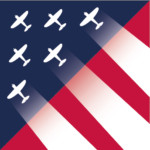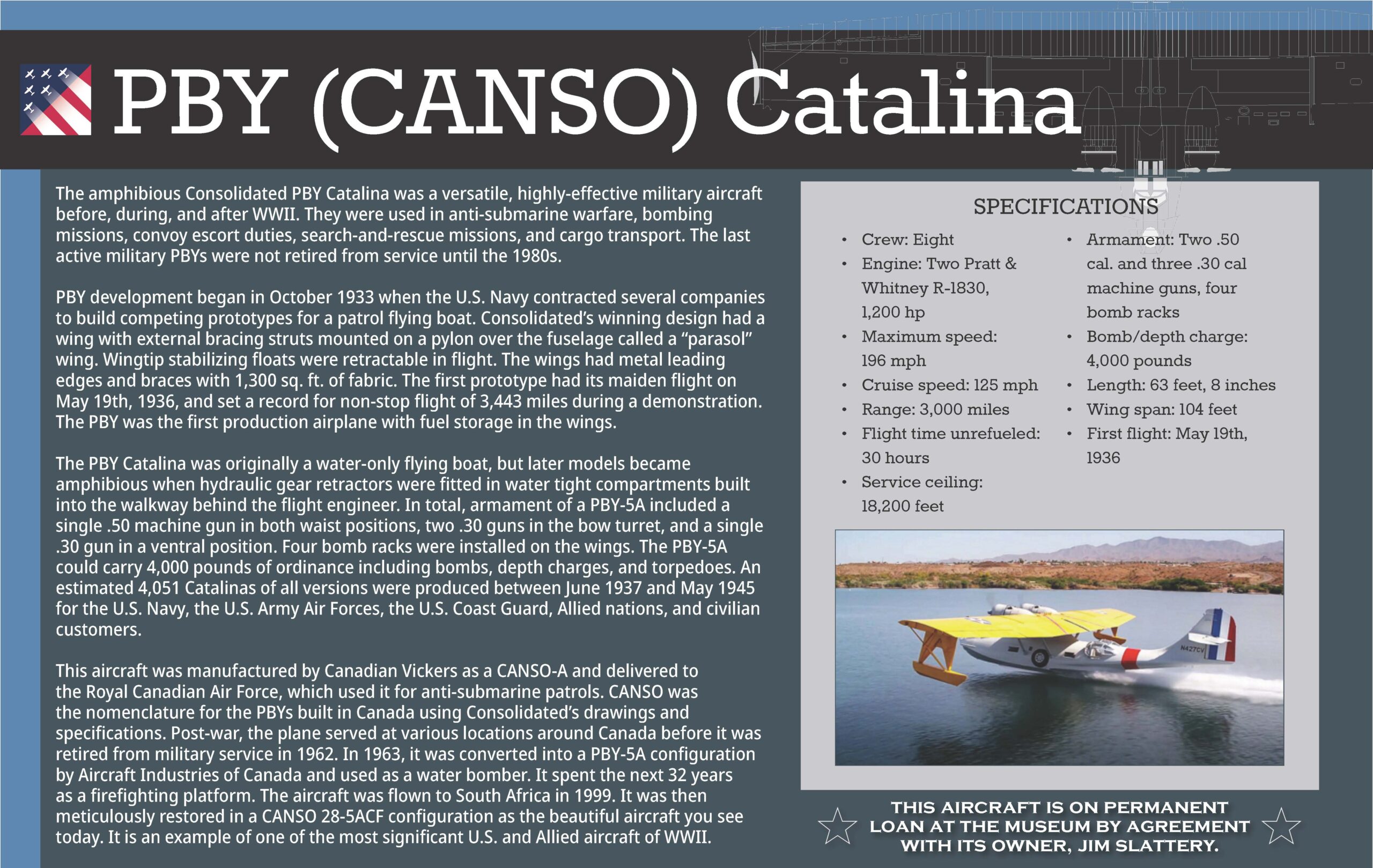The amphibious Consolidated PBY Catalina was a versatile, highly-effective military aircraft before, during and after WWII. They were used in anti-submarine warfare, bombing missions, convoy escort duties, search-and-rescue missions, and cargo transport. The last active military PBYs were not retired from service until the 1980s.
PBY development began in 1933 when the U.S. Navy contracted several companies in October 1933 to build competing prototypes for a patrol flying boat.
Consolidated’s winning design had a wing with external bracing struts mounted on a pylon over the fuselage called a “parasol” wing. Wingtip stabilizing floats were retractable in flight. The wings were metal leading edge and braces with 1,300 sq. ft. of fabric. The first prototype had its maiden flight on May 19th, 1936, and during a demonstration set a record for nonstop flight of 3,443 miles. The PBY was the first production airplane with fuel storage in the wings.
The PBY Catalina was originally a water-only flying boat, but later models became amphibious when hydraulic gear retraction were fitted in water tight compartments built into the walkway behind the flight engineer. In total, armament of a PBY-5A included a single .50 machine gun in both waist positions, two .30 guns in the bow turret, and a single .30 gun in a ventral position. Four bomb racks were installed on the wings. The PBY-5A could carry 4,000 pounds of ordinance – bombs, depth charges and torpedoes. An estimated 4,051 Catalinas of all versions were produced between June 1937 and May 1945 for the U.S. Navy, the U.S. Army Air Forces, the U.S. Coast Guard, Allied nations, and civilian customers.
This plane was delivered to the Royal Canadian Air Force, which used it for anti-submarine patrols flying from Reykjavik, Iceland. Post-war, the plane served at various locations around Canada before it retired from military service in 1962. It was converted to a water bomber and spent the next 32 years as a firefighting platform. The aircraft was flown to South Africa in 1999, where it was parked at a Johannesburg airport. It was then meticulously restored as an example of one of the most significant Navy aircraft of WWII. The restored aircraft now resides here at the museum.


